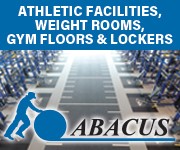by Byron Whetstone
Unlike many other security trade shows, the National Association of Campus Card Users (NACCU) is attended by many prominent universities in the United States. Attendees learned about issues with complexity in security technology due to multiple platforms for access-control, surveillance, and card credentials. Additionally, the network security IT requirements are left largely in the hands of the local commercial integrators; this situation is becoming a cyber-risk for many campuses.
When I attended the NACCU conference a few years ago, the most common solutions articulated to me “we just have to wait until we can get funding to solve the problems.” We need to control our own networks in order to operate the access control and security in these buildings.”
Historically, the building owner or tenant would have a security consultant determine the applications or the feature set for any given building or campus. Today, many in the architectural community are not able to stay current on the technology in the marketplace, so they rely on specification writers employed by the largest hardware companies. Whether thinking about security hardware, cameras, software, or locking products, campus decision-makers now face multiple challenges in securing functional and dynamic access-control solutions. Finding a consensus answer can depend on gaining buy-in from multiple constituencies, many of which may have disparate viewpoints on the appropriate technology solution set for the end user.
Dynamic Access Control
Owners want to make effective and intelligent choices, and choices and contractors know that employing multiple sub-contractors for IT and access applications can lead to less-effective solutions. A “certificate of occupancy” is required to occupy a building, and to earn this certificate, owners must demonstrate that access and egress are functional.
Commercial integration businesses and contract hardware businesses are now competing robustly for market share. The “door guys” are often willing to offer a total suite of products and services. Recently, the door industry is disrupting the integration space by providing offerings and value unrelated to wall readers and service deployment. Future business standards are currently being defined because door hardware manufacturers are making the most substantial innovations in locking and electronics, and they are looking for more paths to the market for their goods. When we started American Direct in 1991 as a contract door and hardware distributor, a door was basically just a door (frame, slab, and hardware), and access control wasn’t much more than locks, keys, and closers. Today, the door is a dynamic digital ecosystem—intelligent locks, electric strikes, position switches, card readers, video surveillance, biometrics, life safety, and more—responsible for aggregating, analyzing, and effectively acting on a rushing river of data. These innovations at the door opening offer the amazing potential to simplify and secure human life, as well as potentially improving a building’s long-term operational efficiency. They do, however, also introduce significant new vulnerabilities, including cyber threats and the increasing complexity of the door opening itself.
The good news is that we already have at our disposal the advanced technology required to provide efficient and effective security solutions at the door opening. However, in an increasingly complex and digitally-interconnected world, we need to think beyond doors, frames, hardware, and even beyond the latest and greatest access control hardware and software. To ensure the ultimate safety and security of a building and its occupants—as well as achieve design, budget, and timeline goals—we must be dedicated to providing total integration of every single facet of every single door opening.
Single-Source Access Solution
Existing sources have serious lapses, gaps, and shortcomings for the “as-built” community. Further, door and security manufacturers desperately need to change construction techniques and delivery methods for new construction and renovation in the products and services they provide. For the most secure and safe delivery for future building occupants, a single-source access solution, using a centralized sub-contractor or security partner should be mandated. That partner should be capable of providing every aspect of the security solution: mechanical, electronic, and platform implementation.
Because of this needed disruption in the supply chain, more companies are offering turn-key installation and system implementation. The days of multiple sub-contractors and finger pointing are on the decline, making way for innovators to provide a one-package solution. This total access integration is the new reality. Suppliers can now offer security access solutions with existing door hardware, bringing a one platform solution that costs less and is more secure.
Services such as pre-construction specification review, product recommendation, and comprehensive budgeting can target the needs of a campus project before construction begins. Such pre-planning cuts down on costs and insures the perfect fit for security needs and integration with existing IT requirements. Early attention to budgetary needs can reduce the need to “wait on funding,” giving campuses cutting-edge security solutions now rather than pushing these expenditures down the line.
In our industry focuses on providing for the safety and security of humanity. Our goal is to provide solutions for the safety and security risks people face every day.










